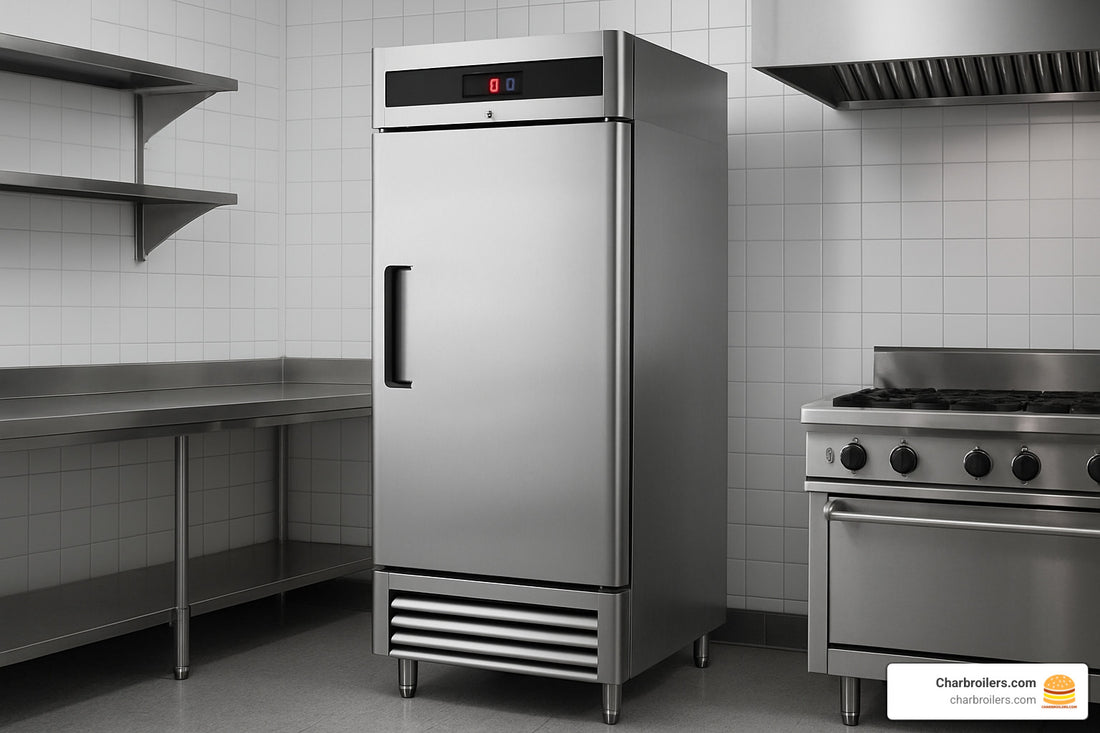
Commercial Upright Frost Free Freezers That Keep Their Cool
Share
Why Commercial Kitchens Need Frost Free Freezers
Commercial upright frost free freezers are essential equipment for restaurants, grocery stores, and food service operations that need reliable frozen storage without the hassle of manual defrosting. If you're looking for the right freezer for your business, here's what you need to know:
| Feature | Benefit |
|---|---|
| Frost-free technology | Eliminates manual defrosting, saving 2-4 hours of labor monthly |
| Capacity range | 12 cu. ft. to 80+ cu. ft. options available |
| Temperature range | Typically -8°F to 0°F (-22°C to -18°C) |
| Energy efficiency | ENERGY STAR models save up to 20% on energy costs |
| Price range | $1,300 to $7,000 depending on size and features |
For busy restaurant kitchens, the right freezer can make all the difference between smooth operations and constant maintenance headaches. Today's commercial frost-free models offer significant advantages over their manual defrost counterparts, with features like digital temperature controls, LED lighting, and power outage protection that keeps food frozen for up to 48 hours.
"I've had large commercial-type freezers before, but this frost-free model is perfect — lighted, just the right size, and no more dealing with ice buildup," notes one chef who recently upgraded.
I'm Sean Kearney from Charbroilers.com, with over a decade of experience helping restaurants select the right commercial upright frost free freezers for their unique operational needs. Having worked with hundreds of food service businesses, I've seen how the right freezer can dramatically reduce maintenance time while improving food safety and preservation.
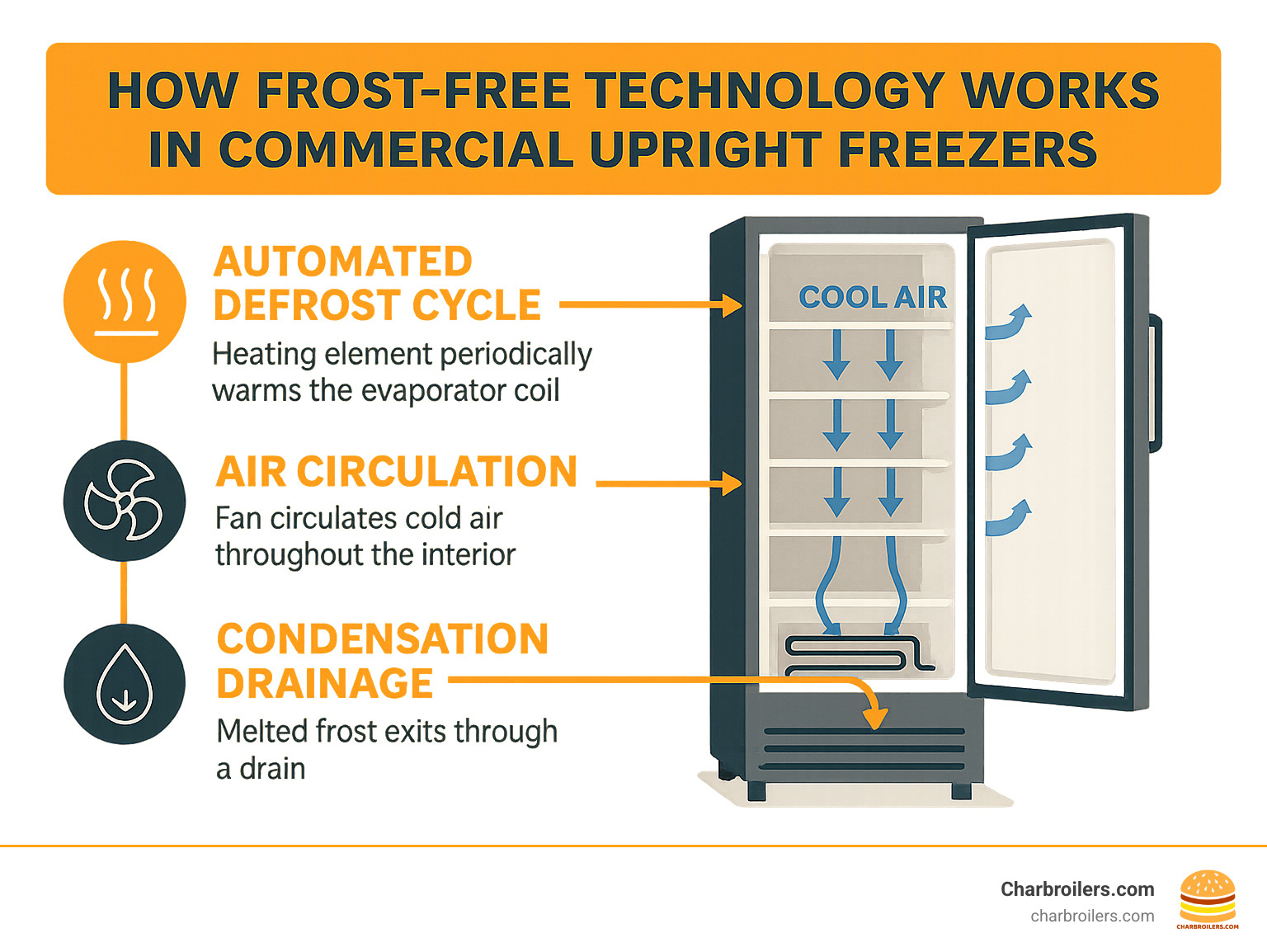
Understanding the Commercial Upright Frost Free Freezer
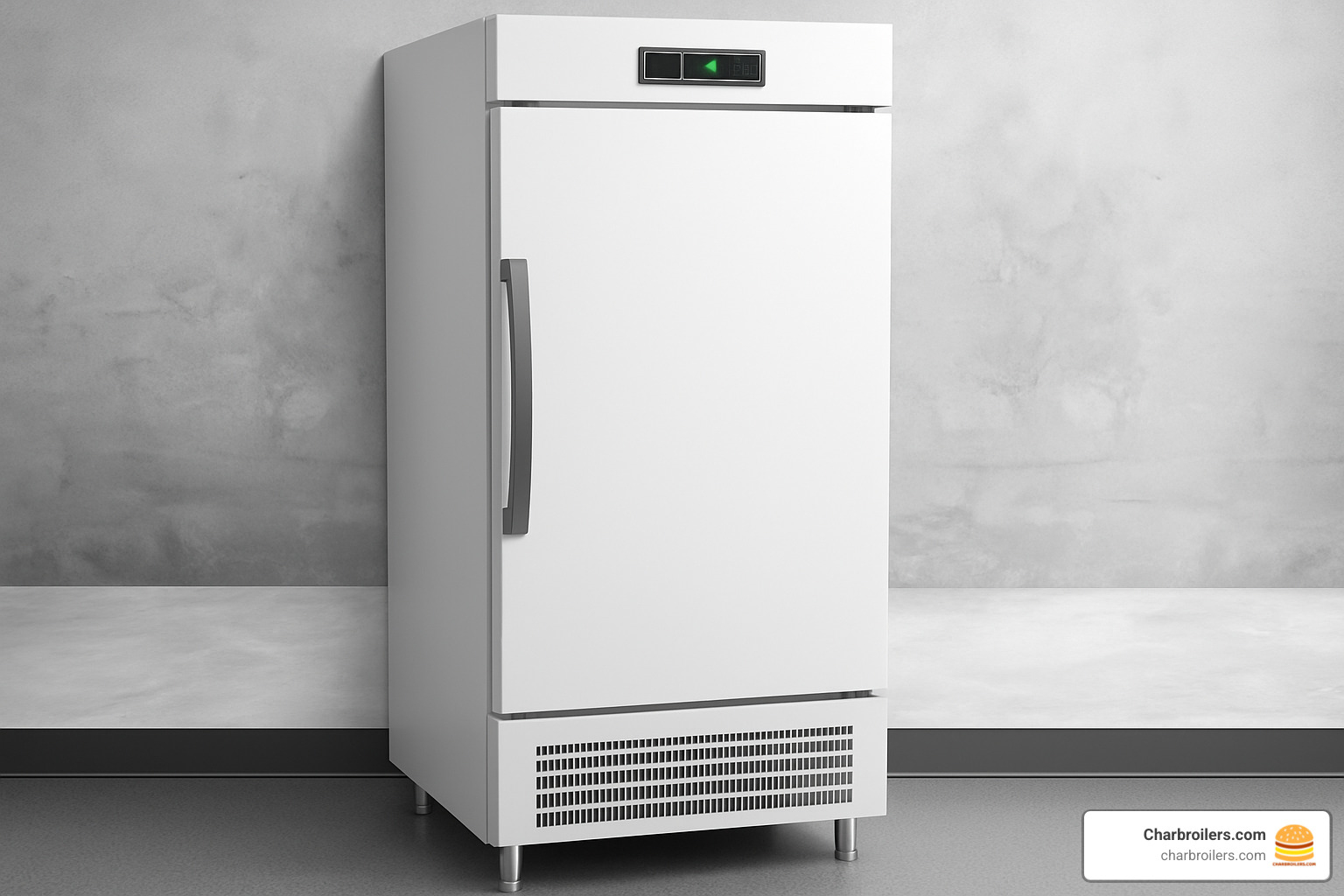
Ever wonder what makes a commercial upright frost free freezer so special? It's not just another cold box! These workhorses are fundamentally different from their manual defrost cousins in ways that can save your kitchen staff hours of tedious ice-chipping work.
The secret lies in their clever design. These reach-in freezers use fan-assisted cooling coils paired with automatic defrost heaters to keep frost from building up in the first place. Most commercial models maintain a chilly -10°F, perfect for preserving your frozen inventory while preventing that dreaded freezer burn that can ruin expensive products.
Let's see how the three main freezer types stack up against each other:
| Feature | Manual Defrost Upright | Frost Free Upright | Chest Freezer |
|---|---|---|---|
| Defrosting | Manual (2-4 hours monthly) | Automatic | Manual |
| Energy Efficiency | Moderate | Lower (due to defrost cycle) | Highest |
| Temperature Stability | High | Moderate with fluctuations | Highest |
| Space Efficiency | High (vertical storage) | High (vertical storage) | Low (horizontal footprint) |
| Accessibility | Good (shelved) | Good (shelved) | Poor (deep bin) |
| Commercial Applications | Small operations | High-volume operations | Bulk storage |
| Price Range | $1,300-$4,000 | $1,500-$7,000 | $900-$3,000 |
How Frost Free Technology Works
The beauty of frost-free technology is in its simplicity. It's like having a tiny, hardworking maintenance person inside your freezer 24/7!
Behind the scenes, evaporator coils hidden within the freezer walls cool everything down. About every 6-8 hours, a defrost timer triggers a brief warming cycle. A small heating element gently warms the coils just enough to melt any frost that's trying to form. This water trickles down to a drainage pan near the compressor, where the heat from the compressor itself causes the water to evaporate. All the while, circulation fans keep air moving throughout the cabinet, preventing those cold spots where moisture loves to settle and freeze.
The whole process happens automatically without you lifting a finger. Your staff probably won't even notice it's happening!
Key Benefits for Businesses
When you invest in a commercial upright frost free freezer, you're not just buying convenience—you're making a smart business decision.
Your kitchen will enjoy significant labor savings, typically 2-4 hours monthly per unit that would otherwise be spent on manual defrosting. For restaurants with multiple freezers, this can add up to thousands in saved labor costs annually.
You'll also appreciate the reduced downtime. No more transferring all your frozen inventory to temporary storage during defrosting sessions—your operation keeps running smoothly around the clock.
Modern frost-free systems maintain consistent temperatures with minimal fluctuation during defrost cycles, a big improvement over older models. Plus, with NSF and ETL certifications, these units meet strict food safety standards, making those surprise health inspections a little less nerve-wracking.
Perhaps best of all, your food quality improves. Without frost buildup, products are less likely to suffer freezer burn or quality degradation, reducing waste and keeping your customers happy.
As one of our customers, a busy bistro owner in Chicago, told us: "Switching to frost-free was like hiring an extra prep cook—suddenly my team had hours back in their week that used to be spent dealing with ice. That time is now spent creating specials instead of chipping frost!"
Size & Capacity Roadmap: From 12 cu.ft. Minis to 80 cu.ft. Giants
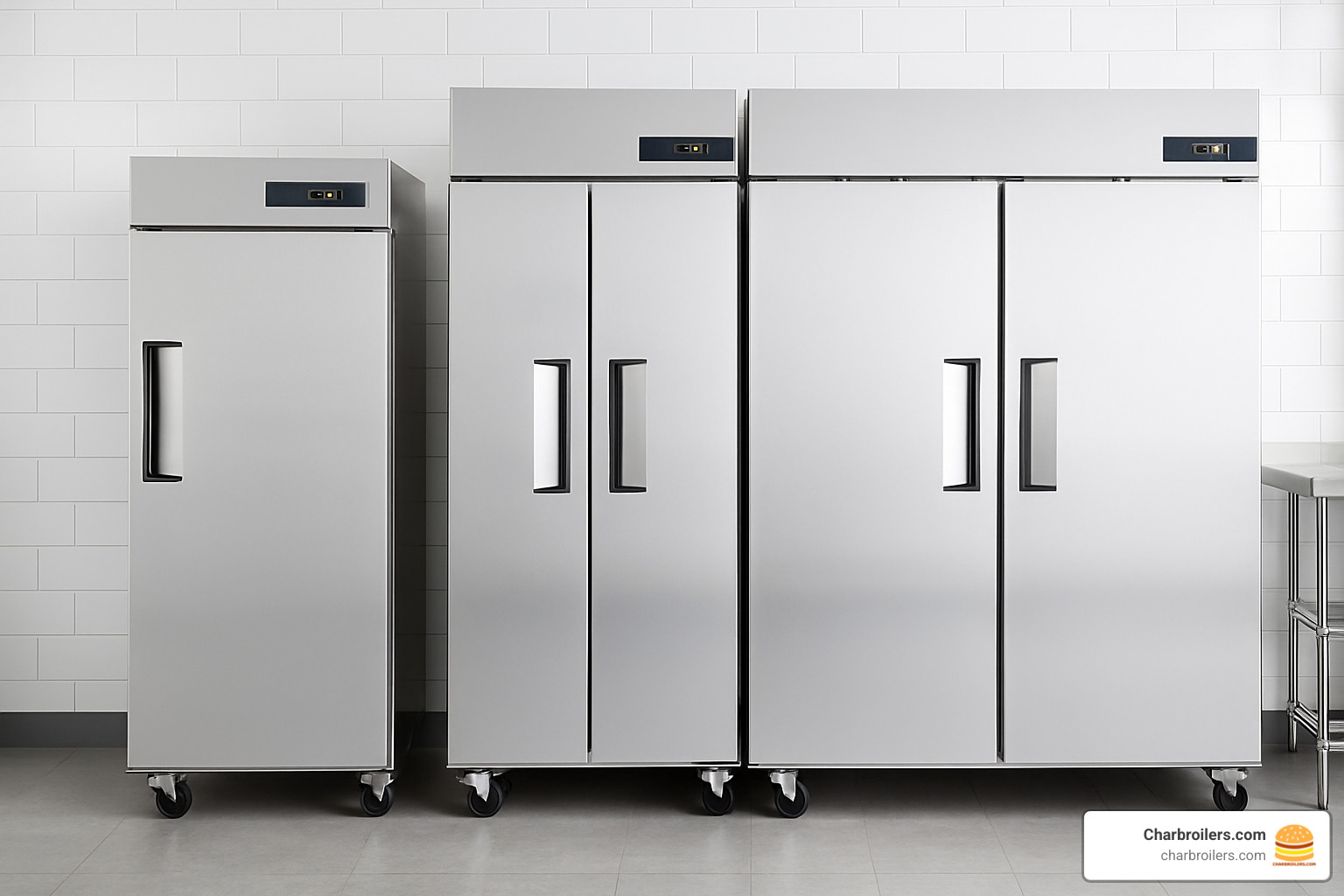
Finding your perfect commercial upright frost free freezer is a bit like choosing the right vehicle—you need something that fits your space, handles your volume, and matches your workflow. Let me walk you through the options in a way that makes sense for your kitchen.
When it comes to width, think of these freezers like t-shirt sizes. Your single-door models are the slimmer options at 24" to 30" wide—perfect for squeezing into tight spaces. Double-door models spread out to 47" to 54", while the triple-door giants command 78" to 82" of wall space. Just remember to look up too! Most commercial models stand proudly at 72" to 84" tall, so check your ceiling clearance before falling in love with a particular model.
Capacity is where things get exciting. Small units offer 12-25 cubic feet of frosty storage, medium models expand to 30-55 cubic feet, and the large workhorses provide a cavernous 60-80+ cubic feet. And don't forget to consider whether you need solid doors for maximum insulation or glass doors if you want to see what's inside without opening up.
For those outdoor kitchens or loading areas, look for "garage-ready" models. These hardy units can handle ambient temperatures from a freezing 0°F all the way up to a sweltering 110°F without breaking a sweat (or, more accurately, while preventing sweating!).
Single-Door "Line Cook" Units (12-25 cu.ft.)
These compact warriors are the unsung heroes of tight kitchens everywhere. A single-door freezer is your best friend when floor space is at a premium but you still need reliable frozen storage close at hand. Picture your line cooks having immediate access to frozen ingredients without leaving their stations—that's the convenience these units provide.
A typical 21 cu.ft. model gives you 3-4 adjustable shelves and holds about 735 pounds of frozen food. That's plenty for a small bistro or café serving 30-50 meals daily. These units tuck neatly into back-of-house prep areas while still providing enough storage to keep operations running smoothly.
"My single-door saved my kitchen," one café owner told me. "We needed the storage but couldn't sacrifice the floor space. It's like it was custom-made for our tight galley layout."
Double-Door Workhorses (45-55 cu.ft.) — commercial upright frost free freezer category
The commercial upright frost free freezer really shines in this middle range—it's the Goldilocks zone for most restaurants. These double-door beauties offer serious storage capacity without overwhelming your kitchen footprint.
With approximately 1,600-1,900 pounds of storage capacity, these models can support operations serving 100-200 meals daily. Imagine having 6-8 adjustable shelves across two compartments—enough to create dedicated zones for meats, seafood, vegetables, and desserts. For banquet facilities and catering operations, this organization is a game-changer during busy service.
A restaurant manager in Portland explained it perfectly: "Our double-door freezer lets us prep for weekend rushes without running out of space. We can store backup of everything and still know exactly where to find it when we need it."
Triple-Door Behemoths (60-80 cu.ft.)
When your operation is feeding an army, these gentle giants have your back. Triple-door models are the workhorses of high-volume kitchens, commissaries, and food distribution centers where serious capacity is non-negotiable.
An 80 cu.ft. model holds an impressive 2,800 pounds of frozen goods across 9-12 adjustable shelves. That's enough space to organize everything by category, meal type, or allergen status. For operations supplying multiple locations or institutional kitchens serving hundreds daily, this kind of capacity isn't just nice—it's necessary.
"Our triple-door changed everything," shared a commissary kitchen manager. "We prep for three restaurant locations from one kitchen, and having dedicated freezer sections for each location prevents mix-ups and saves tremendous time during morning distribution."
Whether you're a cozy neighborhood café or a busy production kitchen, there's a frost-free freezer sized perfectly for your operation. The key is matching your capacity needs with your available space—and we're always happy to help you find that perfect balance.
Must-Have Features & Energy Math
Looking for a commercial upright frost free freezer that won't drain your bank account or the power grid? Today's models come packed with smart features that make life easier while keeping those utility bills in check.
Digital controls have replaced the old-school dial thermostats, giving you precise temperature settings at your fingertips. No more guessing if your freezer is cold enough – these clear displays show you exactly what's happening inside.
When shopping, that little blue ENERGY STAR label is your best friend. It's not just a pretty sticker – these certified units run about 20% more efficiently than standard models, putting real money back in your pocket every month.
The lighting inside has gotten a serious upgrade too. LED systems now illuminate every corner of your freezer without generating heat (which would make your freezer work harder) or burning out unexpectedly during a busy service.
Environmentally conscious? Look for units using R290 refrigerant (propane). These natural refrigerants are replacing the older HFCs that were tough on the ozone layer, making your kitchen a little greener without sacrificing performance.
One of my favorite additions is the door-ajar alarm. That gentle reminder has saved countless restaurants from the disaster of a freezer door left cracked open overnight. Pair that with self-closing doors that never stay open accidentally, and you've eliminated one of the biggest causes of freezer failures.
Inside, adjustable shelving lets you reconfigure as your menu changes, while heavy-duty casters make cleaning behind and under your freezer much less of a backbreaking chore.
Energy Star & Operating Costs Snapshot
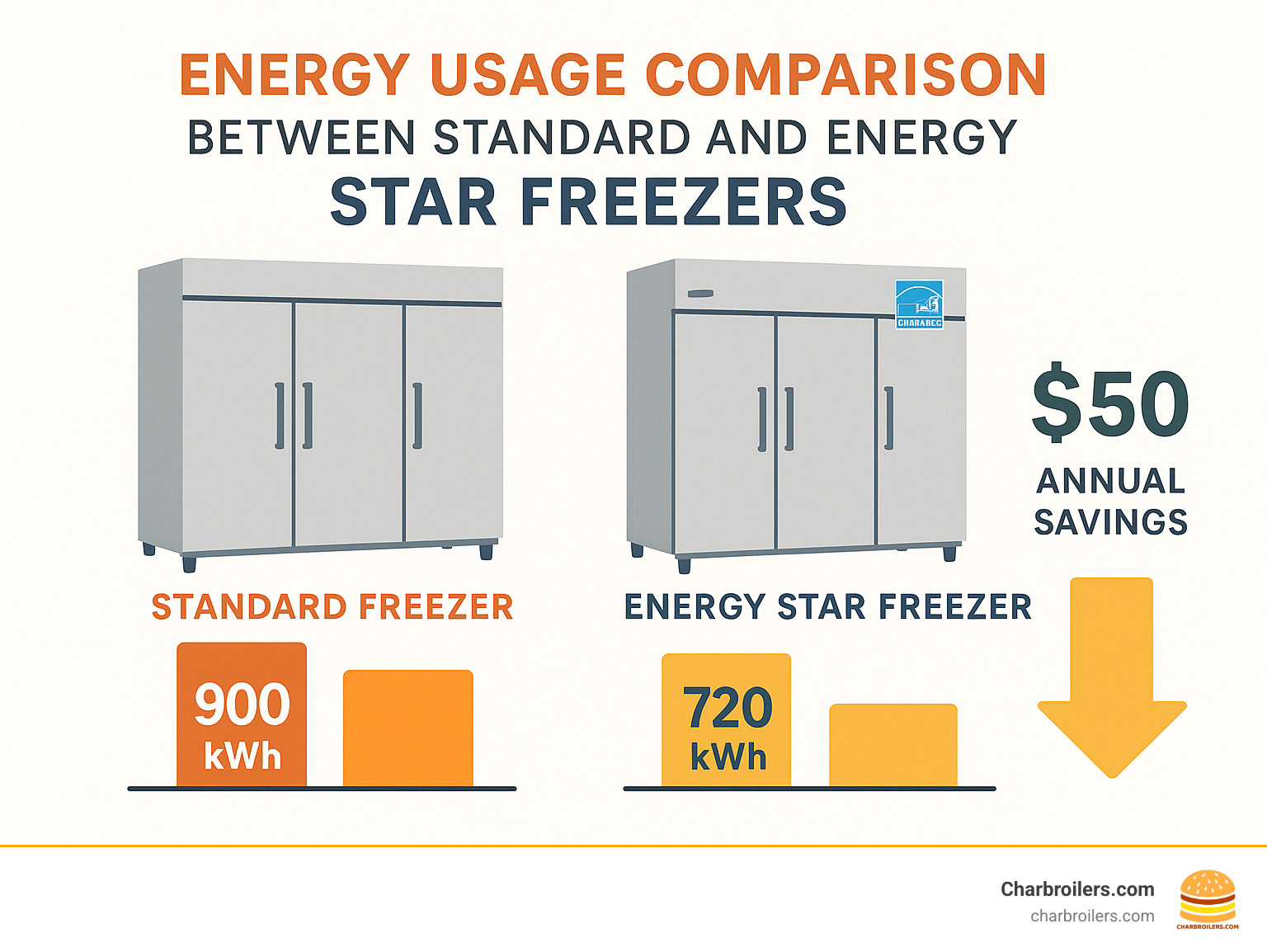
Let's talk dollars and cents – because energy costs can sneak up on you. Most commercial uprights consume between 400-1,200 kWh annually, depending on their size and efficiency rating.
Here's where ENERGY STAR certification really shines. That 20% energy reduction translates to about $40-$100 in annual savings per unit. Not life-changing money, perhaps, but it adds up fast – especially if you're running multiple units.
The real secret that many restaurant owners miss? Utility rebates. Many power companies offer significant kickbacks when you purchase ENERGY STAR commercial refrigeration – sometimes covering 15-30% of the purchase price! Check out this Rebate Rebate for examples of what might be available in your area.
Most energy-efficient models pay for their slightly higher upfront cost within 2-3 years. After that, the savings go straight to your bottom line.
For example, a 48 cu.ft. ENERGY STAR commercial upright frost free freezer might use 800 kWh annually compared to 1,000 kWh for a standard model. At $0.13 per kWh (the national average), you're saving $26 a year – plus those potential rebates at purchase time.
Smart Temperature & Safety Features — commercial upright frost free freezer focus
Temperature consistency is everything when it comes to food safety and quality. Modern commercial upright frost free freezers use EvenTemp cooling systems with multiple sensors throughout the cabinet to eliminate warm or cold spots that could compromise your inventory.
Power outages happen to everyone, but better insulation and tight-sealing gaskets in today's models can keep food frozen for up to 48 hours when the lights go out. That peace of mind alone is worth the investment for many chefs I've worked with.
Auto-close doors that gently pull themselves shut when within 5 inches of the cabinet are a small feature that pays big dividends. Combined with high-temperature alarms that alert you visually and audibly when temperatures creep up, these safety features protect your valuable inventory around the clock.
For operations that need to document food safety, many units now offer HACCP compliance features with temperature logging capabilities. Some even include FastFreeze options that temporarily lower temperature to quickly freeze new items without affecting already-frozen products.
As one Seattle restaurant manager told me, "The temperature alarms have saved us thousands in inventory multiple times. We were alerted to a door left slightly ajar before any thawing occurred."
Want to learn more about keeping your kitchen properly chilled? Check out our guide on Keep Your Cool With These Restaurant-Ready Commercial Refrigerators for a complete rundown of refrigeration options that complement your freezer setup.
2024 Product Roundup: Top Frost Free Upright Freezers to Consider
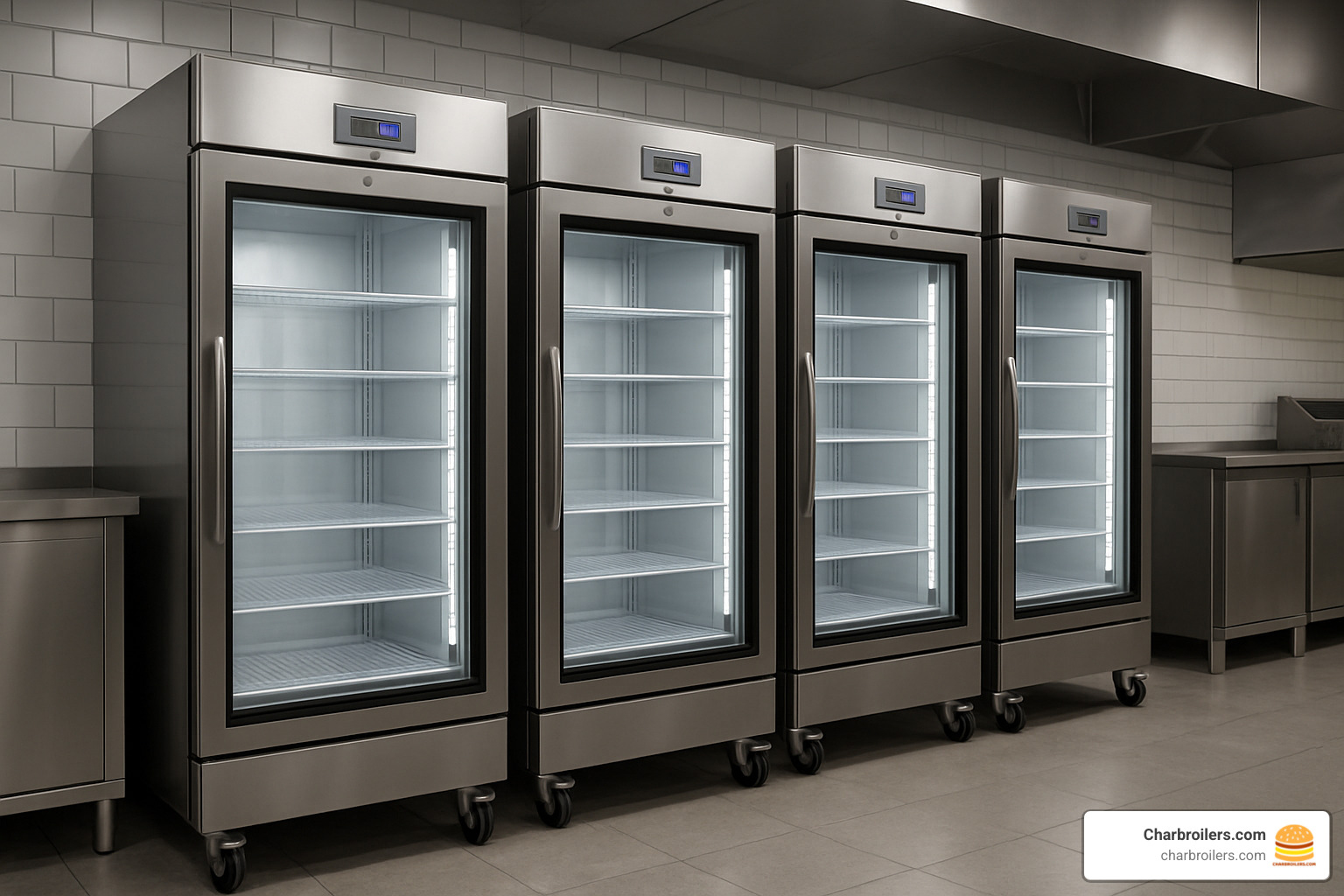
I've spent countless hours talking with our restaurant customers from Seattle to Miami, and I've noticed a pattern in what chefs and kitchen managers really want from their freezers. Based on all that feedback and our own testing, here's my honest take on the standout commercial upright frost free freezers for 2024:
Best Compact Pick (≈19 cu.ft.) — commercial upright frost free freezer for tight kitchens
If you're running a small kitchen where every square inch matters, this 19 cubic foot model is your new best friend. With just a 30" width footprint, it's like it was designed specifically for tight spaces.
What makes this model special is its versatility. The garage-ready design means it handles temperature swings from freezing 0°F all the way up to sweltering 110°F—perfect if your kitchen gets toasty or you need to place it in a non-climate-controlled area.
One chef in Portland told me, "It's been a game-changer for us. We were wasting so much time defrosting our old freezer, but this one just quietly takes care of itself." The digital controls, LED display, and lockable door add convenience and security, while the three adjustable shelves give you flexibility for different container sizes.
At $1,500-$1,800, it's a solid investment that quickly pays for itself in saved labor hours.
Best Mid-Size Pick (≈47 cu.ft.)
The workhorse of our lineup, this 47 cubic foot, two-door model strikes the perfect balance between capacity and footprint. It's the freezer I recommend most often to medium-sized restaurants serving 75-150 meals per day.
The stainless steel inside and out isn't just about looks—it makes cleaning a breeze and stands up to the punishment of busy kitchens. The two-door design is thoughtfully engineered to minimize cold air loss when you're grabbing ingredients, and the six adjustable shelves let you create the perfect setup for your specific needs.
"We've organized one side for proteins and the other for everything else," a Seattle caterer told me. "The LED lighting means no more squinting to find things, and the auto-defrost has been completely reliable."
Priced between $3,200-$3,800, it's the sweet spot for operations that need serious capacity without breaking the bank.
Best Large-Capacity Pick (≈72 cu.ft.)
When you're feeding an army, this 72 cubic foot beast delivers. With three separate doors and nine adjustable shelves, it's like having three freezers in one footprint.
The self-closing doors have a clever 90-degree stay-open feature that makes loading and unloading much easier—a detail you'll appreciate during those big deliveries. The heavy-duty 5" casters (two with locks) make it surprisingly easy to move this giant for cleaning.
A banquet hall manager in Chicago shared, "We serve 300+ people on busy nights, and this freezer keeps everything perfectly organized and accessible. The frost-free operation means we never waste time scraping ice."
Yes, at $5,000-$6,000 it's an investment, but for high-volume operations, the labor savings and organizational benefits make it worth every penny.
Value Pick With Rebate Eligibility
For the budget-conscious kitchen looking at the long game, this 25 cubic foot model offers impressive savings. Its ENERGY STAR certification isn't just good for the planet—it's good for your wallet too.
Many utility companies offer rebates of $200-$400 for energy-efficient commercial refrigeration, bringing the effective price down considerably. One restaurant owner showed me his utility bills before and after switching to this model, and the difference was striking—about $15-20 per month in savings.
With a 3-year parts and labor warranty and typical ROI under 3 years when you factor in energy savings, this $1,900-$2,200 freezer (before rebates) makes financial sense for smaller operations.
Premium Eco-Friendly Pick
For those looking to minimize their environmental footprint while maximizing kitchen efficiency, this premium 54 cubic foot model sets the standard. The R290 natural refrigerant has zero ozone depletion potential—a feature that's becoming increasingly important as regulations tighten around traditional refrigerants.
What really sets this model apart is its smart technology. The touch-screen display with HACCP data logging and USB download capability takes the guesswork out of food safety compliance. The self-adapting defrost system actually learns from your usage patterns to optimize performance.
"The data logging feature has made our health inspections so much easier," reported a fine dining chef in Boston. "And the antimicrobial coating on the shelves gives us extra peace of mind."
At $4,200-$4,800, it's a premium option, but the 5-year compressor warranty and advanced features make it worth considering for operations where quality and sustainability are top priorities.
Each of these commercial upright frost free freezers offers something special, and I'm happy to help you figure out which one makes the most sense for your specific kitchen needs. At Charbroilers.com, we can even help with financing options to make these investments more manageable for your food service operation.
Installation, Maintenance & Organization Hacks
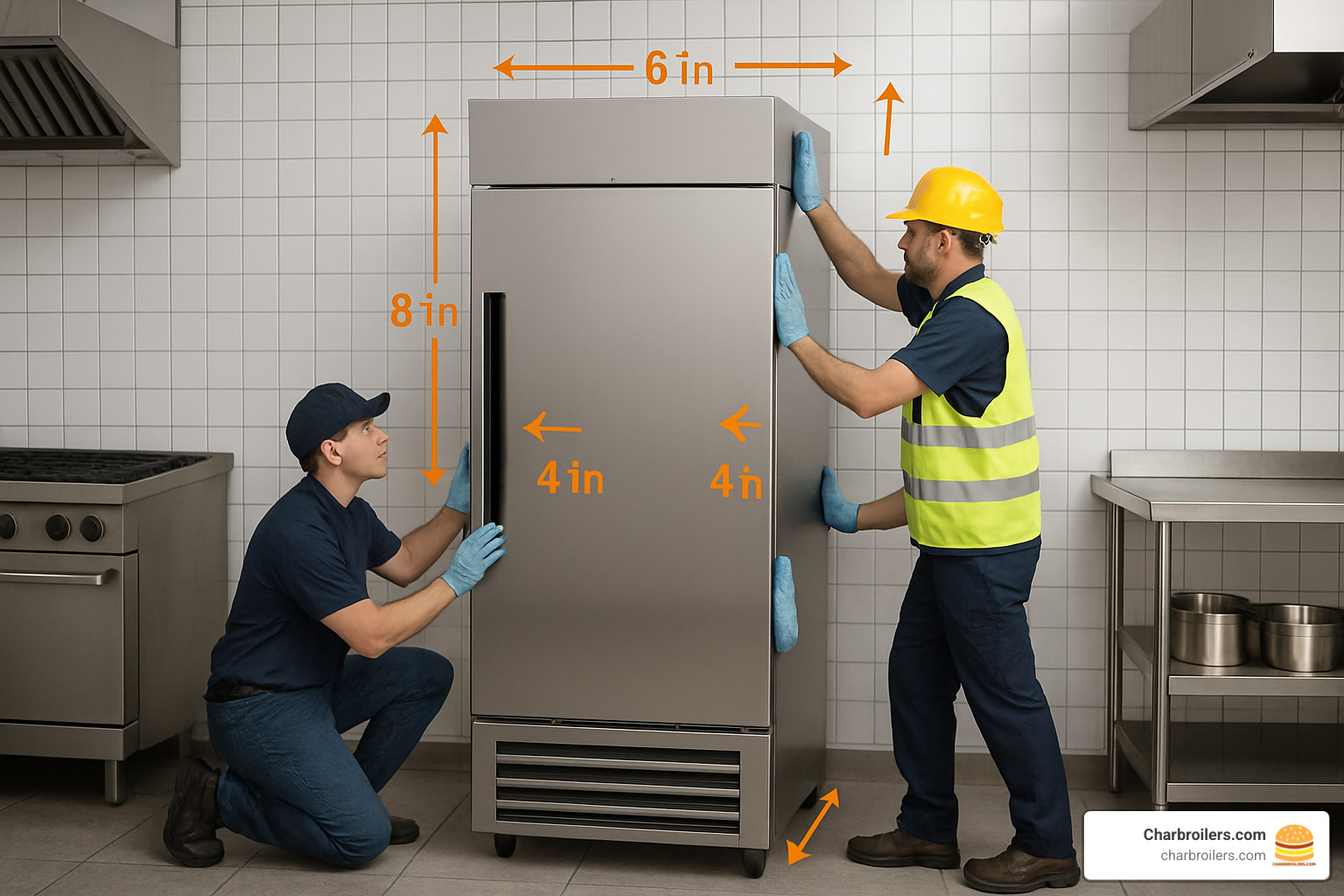
Getting the most from your commercial upright frost free freezer isn't just about choosing the right model—it's about proper setup and ongoing care. Think of your freezer as a trusted kitchen employee that needs the right environment and regular attention to perform at its best.
Installation Checklist
Setting up your freezer correctly from day one prevents headaches down the road. Start by finding the perfect spot with appropriate ambient temperature conditions. Most garage-ready models can handle environments between 0°F and 110°F, while standard models prefer the comfort zone of 60°F-90°F.
Your freezer needs its own dedicated power source—typically a 120V/15A circuit for standard units. Larger models might be a bit more demanding, requiring 208-230V power. Don't try to cut corners here; sharing circuits can lead to tripped breakers at the worst possible times.
Space matters too. Your freezer needs room to breathe with at least 3" clearance at the back, 12" on top, and 1" on the sides. This airflow is crucial for efficiency and preventing overheating.
"When we installed our new freezer, we almost put it flush against the wall to save space," shares a Seattle café owner. "Our installer stopped us just in time—that small gap makes a huge difference in performance and energy bills."
Make sure your flooring can handle the weight—we're talking 1,000+ pounds when fully loaded. Position near a floor drain if possible, especially in humid Seattle-like environments where condensation is common.
Finally, take time to properly level your unit using the adjustable legs. A perfectly level freezer ensures doors close properly and condensation drains as designed. In earthquake-prone areas, securing the unit to walls isn't just smart—it might be required by local building codes.
Weekly & Quarterly Maintenance
Taking care of your commercial upright frost free freezer is like maintaining a car—regular attention prevents expensive breakdowns.
On a weekly basis, give those door gaskets some TLC with a gentle wipe-down using mild soap. These rubber seals are your first defense against cold air escaping, and keeping them clean prevents mold while maintaining a tight seal. Also take a moment to check temperatures by comparing the display reading against a separate thermometer—this simple step can catch control issues before they affect food safety.
Watch those doors too—they should close smoothly and create a complete seal. While you're at it, give exterior surfaces a quick clean with appropriate stainless steel cleaner to keep things looking professional.
Every three months, tackle these deeper maintenance tasks:
The condenser coils need cleaning with a brush and vacuum—think of this as clearing the freezer's lungs. In dusty kitchens, you might need to do this monthly. Our service tech in Seattle tells customers: "Regular condenser cleaning alone can reduce energy consumption by up to 15%. It's the single most important maintenance task."
Check and clean the drainage system to prevent clogs that could lead to water pooling and potential damage. While the unit is in a defrost cycle, verify that fans are operating correctly. For units with digital controls, see if any firmware updates are available that might improve performance or efficiency.
Finally, check door alignment and adjust hinges if needed—doors that don't align perfectly waste energy and strain components.
Storage Organization Tricks
Smart organization inside your freezer does more than just keep things tidy—it improves efficiency, food safety, and can even extend your unit's lifespan.
Implement a clear FIFO labeling system with color-coded labels that include dates. This ensures older products get used first, reducing waste and improving inventory management. One chef I work with uses colored tape for different days of the week, making rotation instantly visible.
Don't settle for the factory shelf arrangement—customize your shelving heights based on what you actually store. Most operations need different heights for different containers, and adjustable shelves make this easy.
Create dedicated zones for different food categories. A Seattle chef shared: "We use a color-coded shelf system—red for raw meats, blue for seafood, green for vegetables—which has eliminated cross-contamination issues and sped up our prep workflow."
Remember to maintain proper airflow by keeping products 2-3" from walls and leaving space between items. Cold air needs to circulate freely to maintain consistent temperatures throughout.
For smaller items that tend to get lost, try a basket system that maximizes vertical space while keeping similar items grouped together. And whenever possible, require vacuum-sealed packaging for items prone to freezer burn or cross-contamination.
Looking for more cooling solutions for your operation? Check out our guide on Bring the Chill Home: Top Commercial Ice Makers for Residential Use for complementary equipment that works alongside your freezer.
With proper installation, regular maintenance, and smart organization, your commercial upright frost free freezer will provide years of reliable service while keeping your food safe and your energy bills in check.
Frequently Asked Questions about Commercial Upright Frost Free Freezers
How long can these freezers keep food safe during a power outage?
One of the most common concerns I hear from restaurant owners is about power outages. The good news is that modern commercial upright frost free freezers are quite resilient when the lights go out.
Most quality units can maintain safe temperatures for 24-48 hours without power, though this depends on several factors. A fuller freezer will stay cold longer (think of each frozen item as its own little ice pack), so keeping your unit at least 75% full provides the best protection.
The ambient temperature around the freezer also plays a crucial role – a unit in a cool basement will retain temperature better than one in a hot kitchen. And of course, every time someone opens the door during an outage, precious cold air escapes.
"During last year's storm, our freezer kept everything frozen solid for nearly two days," a Seattle restaurant owner told me recently. "We didn't lose a single ingredient, which saved us thousands."
Some premium models even feature battery backup for their alarm systems, so you'll get alerts about rising temperatures even when the power is out – giving you time to take action before thawing begins.
Do frost free cycles increase freezer burn risk?
This is a common misconception based on older technology. While the first generation of frost-free freezers did sometimes increase freezer burn, today's commercial upright frost free freezers have largely solved this issue.
Modern units use sophisticated EvenTemp technology with improved airflow designs that minimize direct air contact with food. The defrost cycles are also shorter and more efficient, causing minimal temperature fluctuation that might damage food quality.
To further protect your valuable inventory from freezer burn:
- Invest in commercial-grade storage containers with tight-fitting lids
- Consider vacuum sealing particularly vulnerable items
- Double-wrap foods that are especially susceptible to freezer burn
- Maintain proper inventory rotation with clear dating systems
"We switched to a modern frost-free unit last year and actually saw a decrease in freezer burn compared to our old manual defrost model," shared a caterer who works with our team. "The consistent temperature makes all the difference."
What certifications should my health inspector look for?
Health inspections can be stressful, but having a properly certified freezer makes this process much smoother. When your health inspector visits, they'll typically look for these key certifications on your commercial upright frost free freezer:
NSF-7 certification confirms your unit meets commercial food service requirements for food safety and sanitation – this is perhaps the most important for passing inspections.
ETL Sanitation listing indicates compliance with established sanitation standards specifically for food service equipment.
ENERGY STAR certification, while not strictly safety-related, demonstrates energy efficiency compliance and can sometimes help with local compliance requirements.
UL or ETL Listing verifies that the unit meets electrical safety standards – critical for insurance purposes as well as inspections.
I always recommend keeping your certification documents handy and pointing out these certifications during inspections. It demonstrates your commitment to maintaining proper food safety standards and can help establish a positive relationship with your inspector.
"When our new inspector came through, she was impressed that we could immediately point out all the certifications on our freezer," one restaurant manager told me. "It set a positive tone for the entire inspection."
Conclusion
Investing in a quality commercial upright frost free freezer is truly one of the smartest decisions you can make for your food service operation. I've seen how these workhorses transform kitchen efficiency and reduce headaches for busy restaurant teams.
The benefits speak for themselves. You'll save 2-4 hours of labor monthly by eliminating that tedious manual defrosting – hours your team can spend creating amazing dishes instead of chipping away at ice. The energy efficiency of modern units, particularly those with ENERGY STAR certification, delivers noticeable savings on your utility bills, often with additional rebates that sweeten the deal.
Food safety – arguably your most important consideration – improves dramatically with consistent temperatures and those invaluable alarm features that alert you before small problems become expensive disasters. Your ingredients stay fresher, your health inspections go smoother, and your peace of mind increases.
I love how the adjustable shelving and dedicated storage zones transform freezer organization. No more digging through piles of frozen items! With everything properly arranged and visible, you'll reduce food waste and improve inventory management – savings that go straight to your bottom line.
Here at Charbroilers.com, we understand that your refrigeration system forms the backbone of your kitchen operation. That's why we take the time to guide you through selecting the perfect commercial upright frost free freezer that matches your specific space constraints, volume needs, and budget realities.
Our Seattle team specializes in creating equipment packages that work together seamlessly. We can help you bundle your freezer purchase with other essential kitchen equipment, ensuring compatibility while maximizing your savings through our flexible financing options designed specifically for food service businesses.
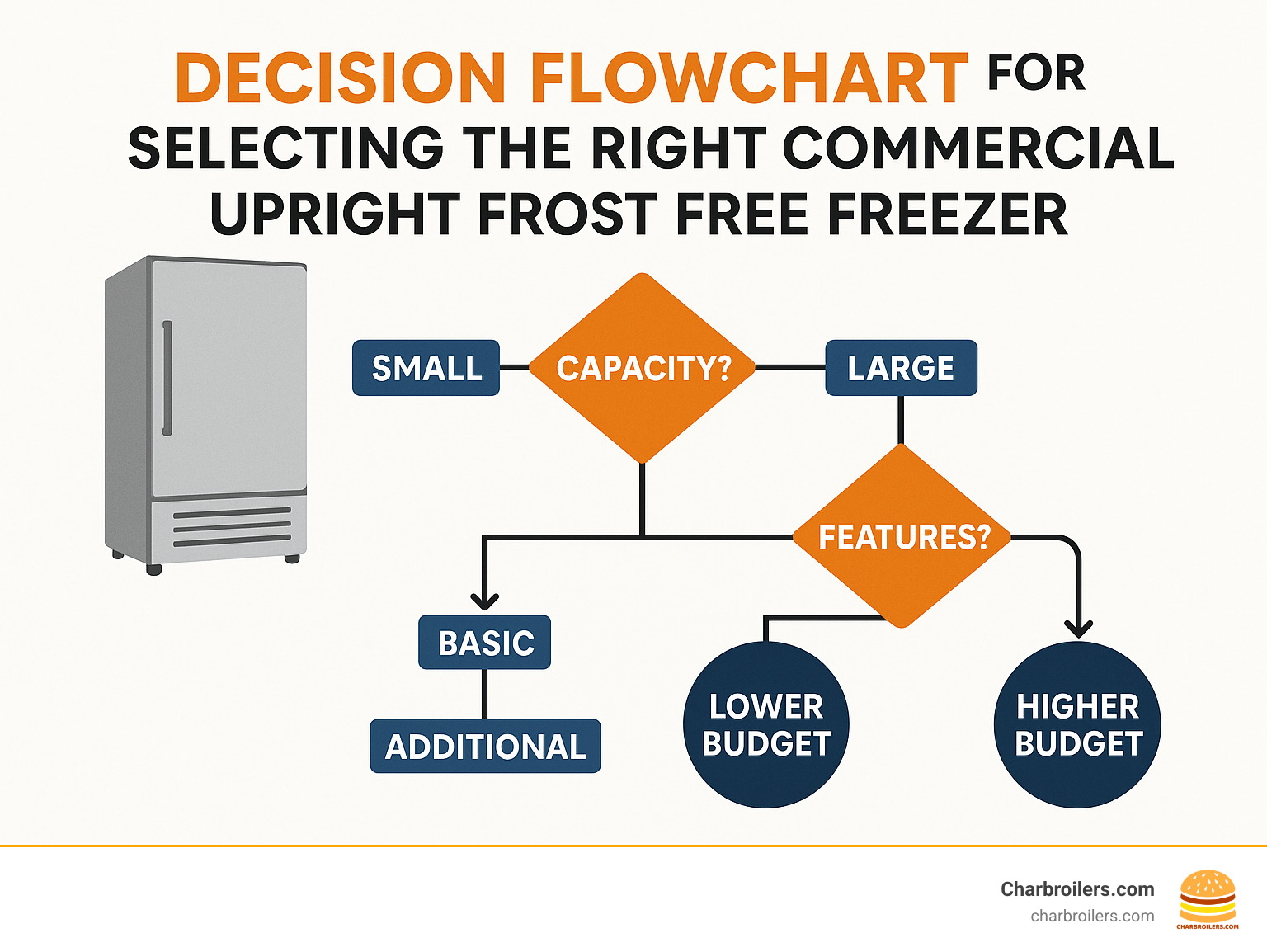
Ready to upgrade your frozen storage and simplify your kitchen operations? I'd love to chat about your specific needs and help you find the perfect solution. Contact us today, and while you're planning your cold storage upgrades, don't miss our companion guide on Keep Your Cool With These Restaurant-Ready Commercial Refrigerators for a complete approach to your refrigeration needs.
